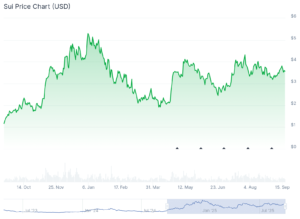Investors Turn to Safe-Haven Yen. Forecast as of 03.02.2025

In contrast to the volatile performance of the Mexican peso, Canadian dollar, and Chinese yuan, the Japanese yen demonstrated resilience in the face of US tariffs. The Japanese yen’s status as a safe-haven asset supported USDJPY bears. Let’s discuss this topic and make a trading plan.
The article covers the following subjects:
Major Takeaways
- The Bank of Japan does not consider negative rates as normal.
- The yen continues to be used by carry traders.
- The government intends to explore how US tariffs affect the rate.
- Long trades on the USDJPY pair formed at 154.3 should be kept open.
Weekly Fundamental Forecast for Yen
The yen has become a source of stability amid the turbulence triggered by Donald Trump. The imposition of tariffs on Mexico, Canada, and China by the US president has rattled global financial markets. Fears of escalating trade wars have spurred demand for safe-haven currencies. Against this backdrop, the USDJPY pair has showcased moderate volatility.
The yen is the only G10 currency that has strengthened against the US dollar since the beginning of the year, thanks to the Bank of Japan, which increased the overnight rate by 25 basis points to 0.5% in January. According to 56% of Bloomberg experts, the continuation of the monetary tightening cycle should be expected in July. 18% of the experts polled predicted this tightening would occur in September, while 9% anticipated it would happen in June.
Market Expectations on Next Overnight Rate Hike Timing
Source: Bloomberg.
The Japanese regulator has several reasons for this. In January, consumer prices in Tokyo rose by 2.5%, the fastest pace since February 2024. Core inflation accelerated to a nearly two-year high of 3.4%, and the Breakeven Inflation Rate (BEI), the market measure of inflation expectations, jumped to a record of 1.6%. According to Bank of Japan Deputy Governor Ryozo Himino, the regulator is set to continue the monetary restriction cycle if its forecasts prove accurate, emphasizing that negative real rates should not remain negative.
Tokyo Inflation Change
Source: Bloomberg.
The government, which previously insisted on maintaining an ultra-soft monetary policy, has now accepted the need for monetary tightening. The Ministry of Finance estimates that debt service costs will rise by $230 billion over the next four years, implying higher rates.
At first glance, the divergence in monetary policy should have dragged the USDJPY pair down. However, the difference in US and Japanese bond yields is so large that the yen continues to be used as a funding currency in carry trade operations. This trend creates the potential for the pair to consolidate and even surge.
Implied Yield Changes
Source: Bloomberg.
Trade wars add to uncertainty in global markets. According to Finance Minister Katsunobu Kato, the government should closely examine how US tariffs affect the yen and what steps the Fed will take in its monetary policy.
The fact that Japan has so far avoided duties says nothing. Japan’s current trade surplus with the US may prompt a shift in Donald Trump’s trade policies towards Tokyo.
Weekly USDJPY Trading Plan
The USDJPY pair will likely increase as US Treasury yields increase in anticipation of accelerating US inflation. Therefore, long trades formed at 154.3 can be kept open. However, signs of a cooling US economy could potentially lead to a medium-term decline in the pair.
This forecast is based on the analysis of fundamental factors, including official statements from financial institutions and regulators, various geopolitical and economic developments, and statistical data. Historical market data are also considered.
Price chart of USDJPY in real time mode
The content of this article reflects the author’s opinion and does not necessarily reflect the official position of LiteFinance broker. The material published on this page is provided for informational purposes only and should not be considered as the provision of investment advice for the purposes of Directive 2014/65/EU.
According to copyright law, this article is considered intellectual property, which includes a prohibition on copying and distributing it without consent.







